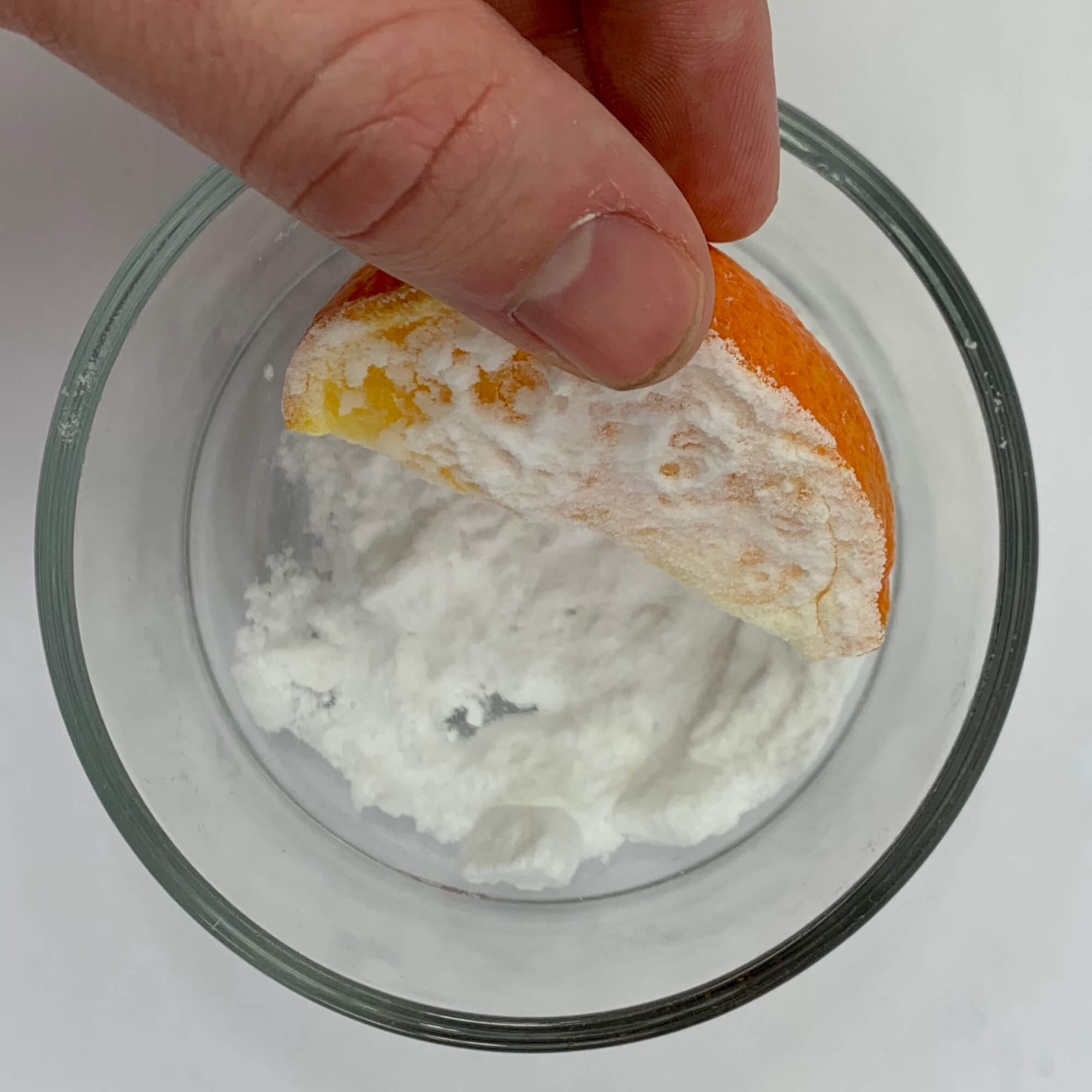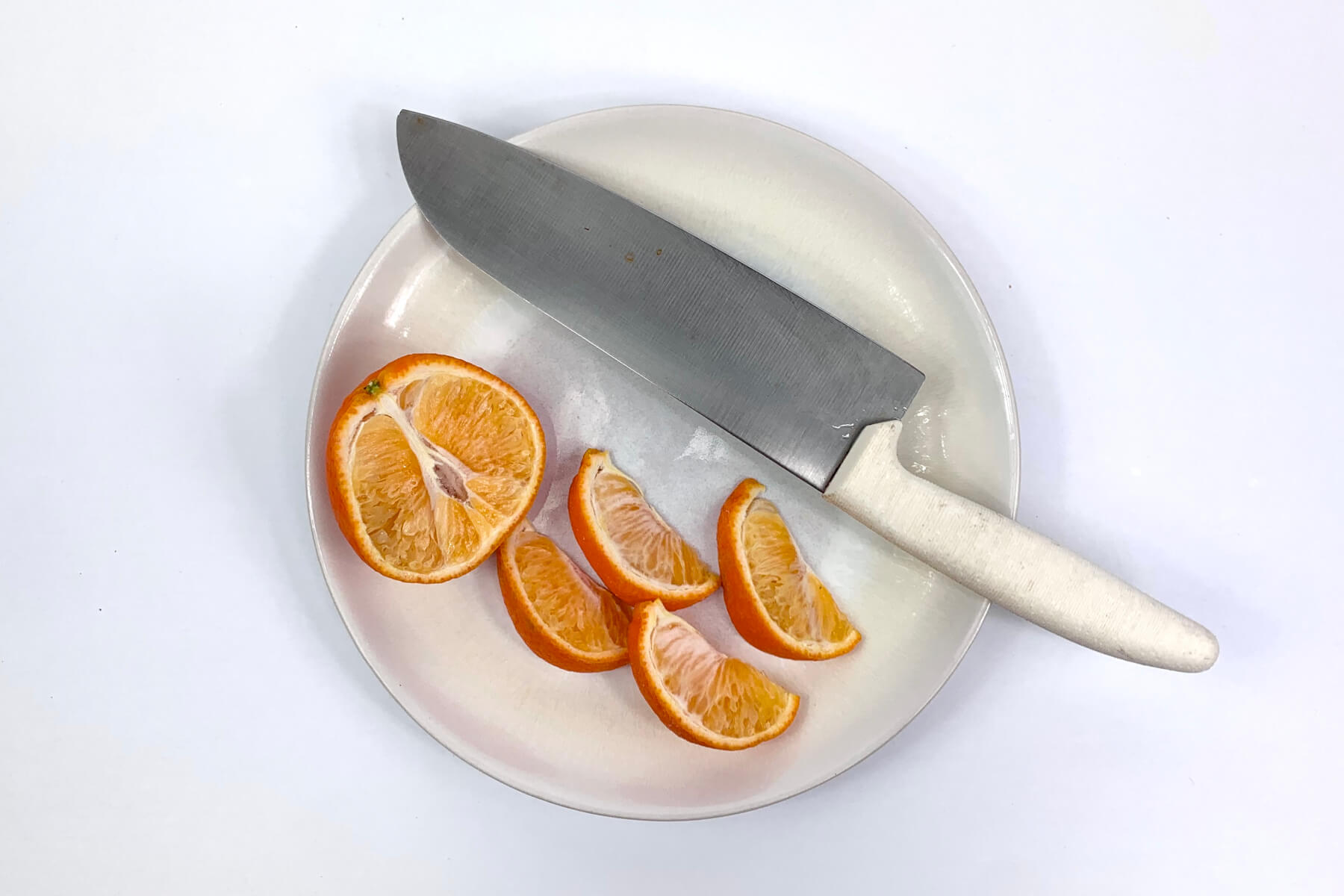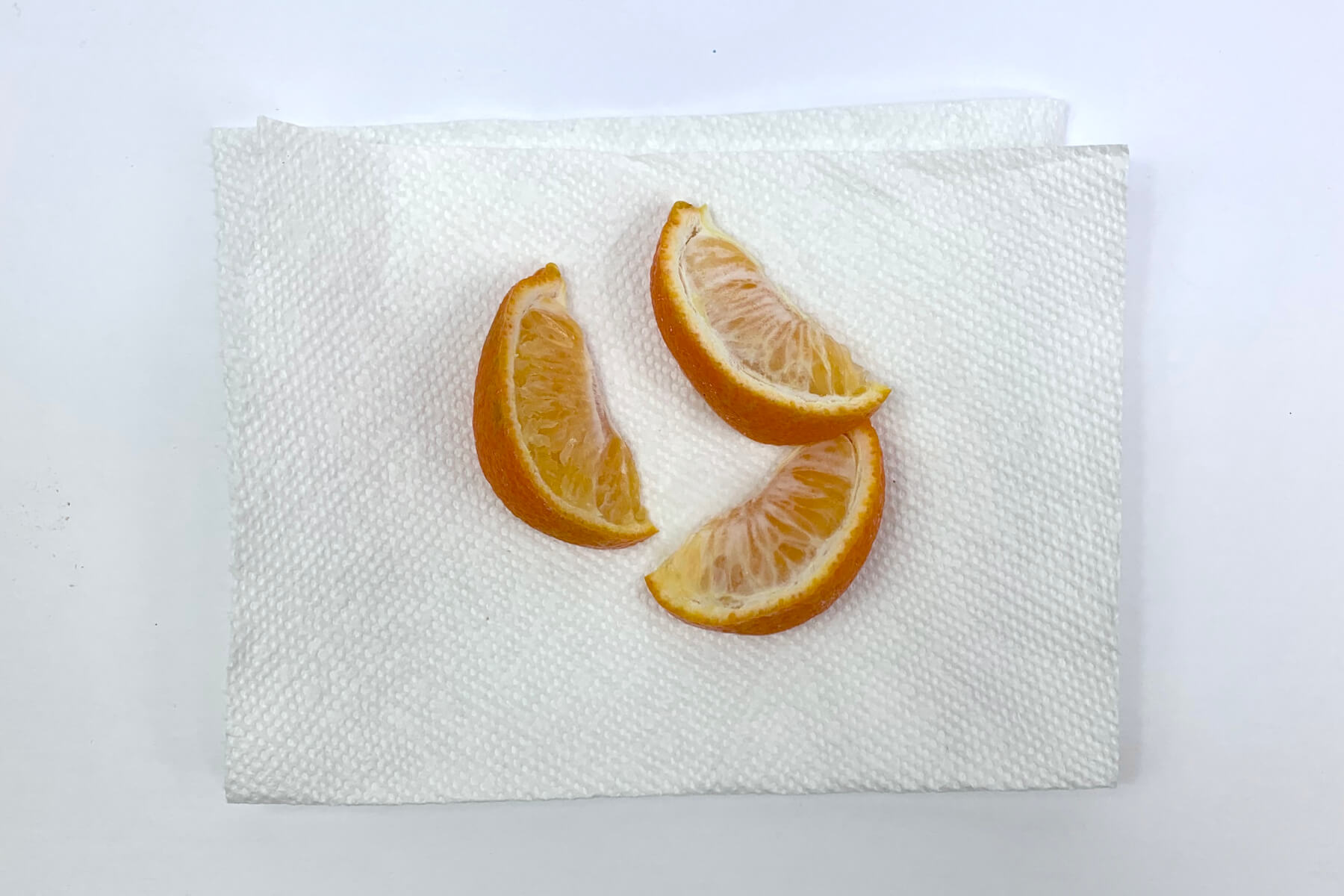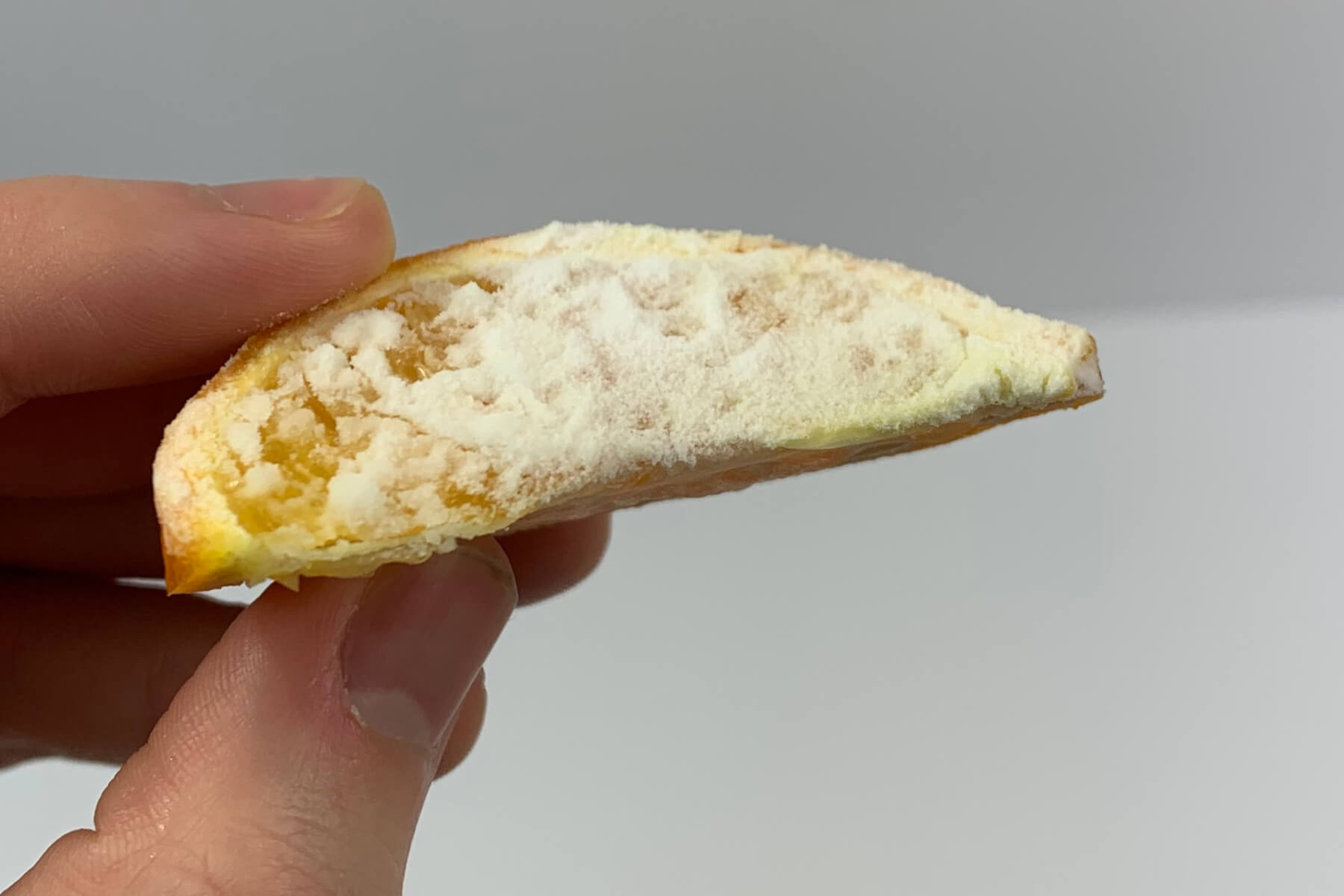


Oranges are a delicious and healthy treat (even if you prefer bananas). There's just something about that perfect sweet-tart combination that really tastes great. This tartness comes from a chemical compound known as citric acid (C6H8O7), a weak acid found in all citrus fruits (creative name, right?).
As you might already know, sodium bicarbonate (NaHCO3), a.k.a. baking soda, reacts with acids, releasing carbon dioxide (CO2) gas in the process. Using this little bit of chemistry knowledge, we can show that oranges contain an acid by combining orange juice and baking soda and observing the reaction. Oh yeah, and to make things a little more fun, why not observe with our tongues?

Ask an adult to cut the orange into slices for you. This experiment works a little better with wedge-shaped slices (instead of circular slices).

Use the paper towel to dry as much juice as possible off one of the orange slices. The idea is to prevent the reaction from happening until the final step.

Dip one side of the dry orange slice into the baking soda so that it forms a very thin layer. Feel free to gently brush a little off with your finger if the layer is a lot thicker than shown in the picture.

Holding the baking soda side away from your tongue, take a bite of the orange, making sure to bite off plenty of the orange as well as a bit of the baking soda. Mmm, tastes like science!
This step can be a little gross, especially if you bite off a lot of baking soda. We recommend keeping the garbage or sink and a glass of water close by!
You must be logged in to comment.